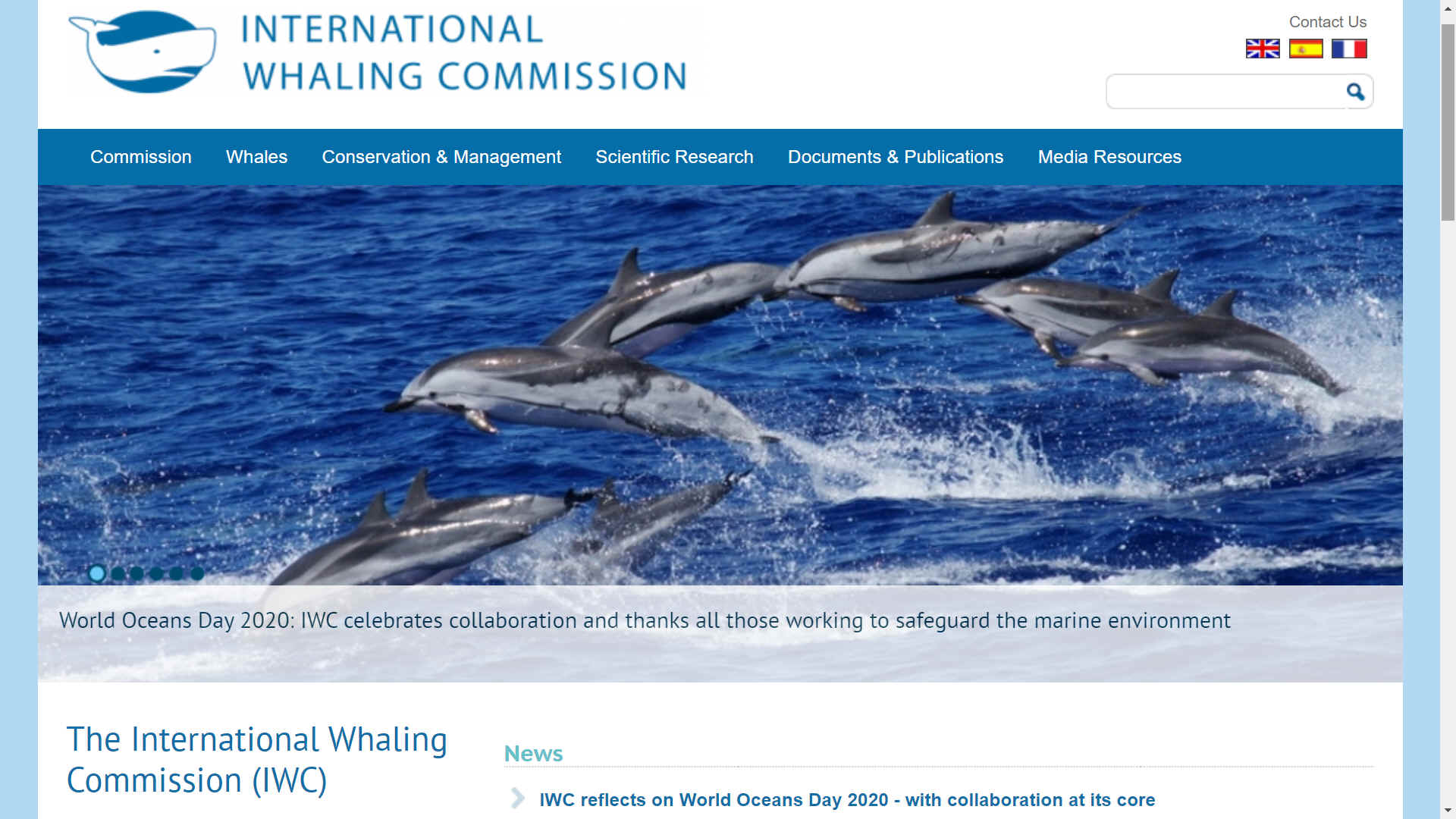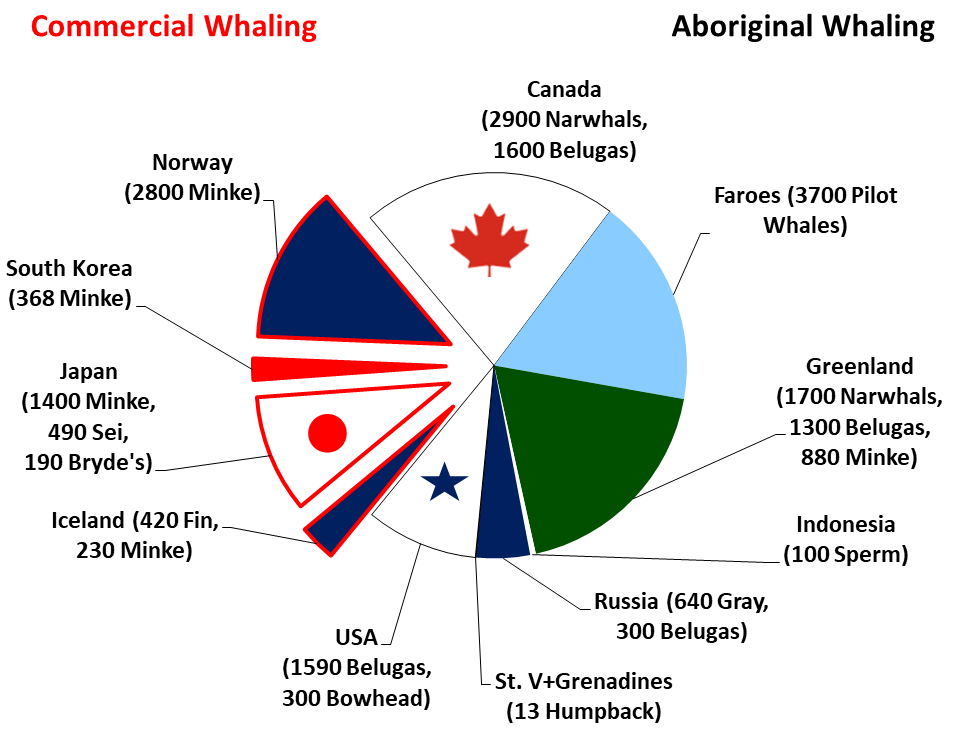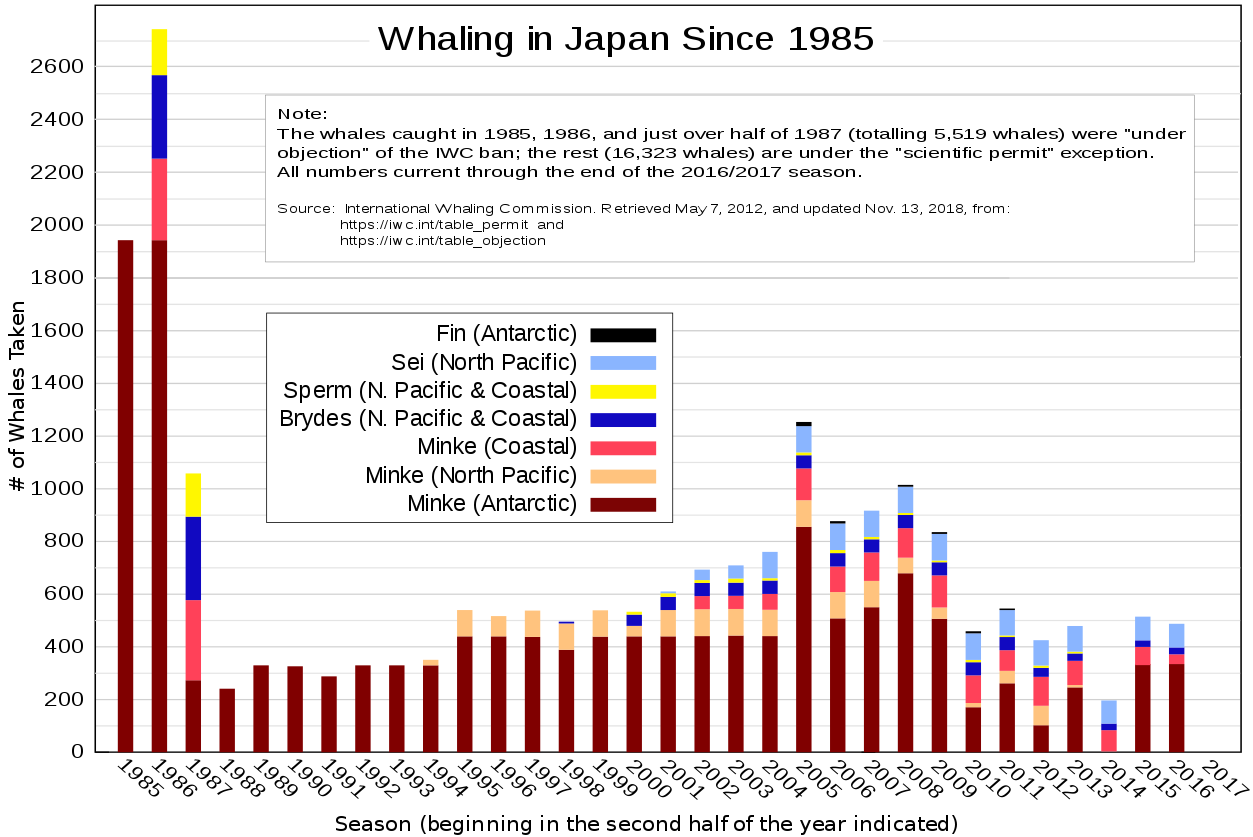
IWC is a voluntary
international organization and is not backed up by treaty, therefore,
the IWC has substantial practical limitations on its authority. First,
any member countries are free to simply leave the organization and
declare themselves not bound by it if they so wish. Second, any member
state may opt out of any specific IWC regulation by lodging a formal
objection to it within 90 days of the regulation coming into force (such
provisions are common in international agreements, on the logic that it
is preferable to have parties remain within the agreements than opt out
altogether). Third, the IWC has no ability to enforce any of its
decisions through penalty imposition.
Whaling is the practice of hunting whales, mainly baleen and
sperm
whales. This activity has gone on since the Stone Age.
In the Middle Ages, reasons for whaling included their meat, oil usable as fuel and the jawbone, which was used in house construction. At the end of the Middle Ages, early whaling fleets aimed at baleen whales, such as bowheads. In the 16th and 17th centuries, the Dutch fleet had about 300 whaling ships
(whalers)
with 18,000 crewmen.
In the 18th and 19th centuries, baleen whales especially were hunted for their baleen, which was used as a replacement for wood, or in products requiring strength and flexibility such as corsets and crinoline skirts. In addition, the
spermaceti found in the sperm whale was used as a machine lubricant and the
ambergris as a material for pharmaceutical and perfume industries. In the second half of the 19th century, the explosive harpoon was invented, leading to a massive increase in the catch size.
Large ships were used as "mother" ships for the whale handlers. In the first half of the 20th century, whales were of great importance as a supplier of raw materials.
Whales were intensively hunted during this time; in the 1930s, 30,000 whales were killed. This increased to over 40,000 animals per year up to the 1960s, when stocks of large baleen
whales collapsed.
Most hunted whales are now threatened, with some great whale populations exploited to the brink of extinction.
Atlantic and Korean
gray whale populations were completely eradicated and the North Atlantic right whale population fell to some 300-600. The blue whale population is estimated to be around 14,000.

THE CULPRITS -
You'd be surprised at who is actually killing the most whales. The
Japanese get most of the bad press, followed by Iceland and Norway, when
in fact Canada, Greenland and the Faroes take more. Canada is the most
surprising hunter of whales, with Indonesia, unbeleivably, killing Sperm
whales.
The first efforts to protect whales came in 1931. Some particularly endangered species, such as the humpback whale (which then numbered about 100 animals), were placed under international protection and the first protected areas were established. In 1946, the
International Whaling Commission (IWC) was established, to monitor and secure whale stocks. Whaling of 14 large species for commercial purposes was prohibited worldwide by this organization from 1985 to 2005, though some countries do not honor the prohibition.
The stocks of species such as humpback and blue whales have recovered, though they are still threatened. The United States Congress passed the Marine Mammal Protection Act of 1972
to help sustain the marine mammal population. It prohibits the taking of marine mammals except for several hundred per year taken in Alaska.
Japanese whaling ships are allowed to hunt whales of different species for ostensibly scientific purposes.
Aboriginal whaling is still permitted. About 1,200 pilot whales were taken in the Faroe Islands in 2017., and about 900 narwhals and 800 belugas per year are taken in Alaska, Canada, Greenland, and Siberia. About 150 minke are taken in Greenland per year, 120 gray whales in Siberia and 50 bowheads in Alaska, as aboriginal whaling, besides the 600 minke taken commercially by Norway, 300 minke and 100 sei taken by Japan and up to 100 fin whales taken by Iceland. Iceland and Norway do not recognize the ban and operate commercial
whaling. Norway and Japan are committed to ending the ban.
Dolphins and other smaller cetaceans are sometimes hunted in an activity known as dolphin drive hunting. This is accomplished by driving a pod together with boats, usually into a bay or onto a beach. Their escape is prevented by closing off the route to the ocean with other boats or nets. Dolphins are hunted this way in several places around the world, including the
Solomon
Islands, the Faroe Islands, Peru and Japan (the most well-known practitioner). Dolphins are mostly hunted for their meat, though some end up in dolphinaria. Despite the controversy thousands of
dolphins are caught in drive hunts each year.

Please use our
A-Z INDEX to
navigate this site


